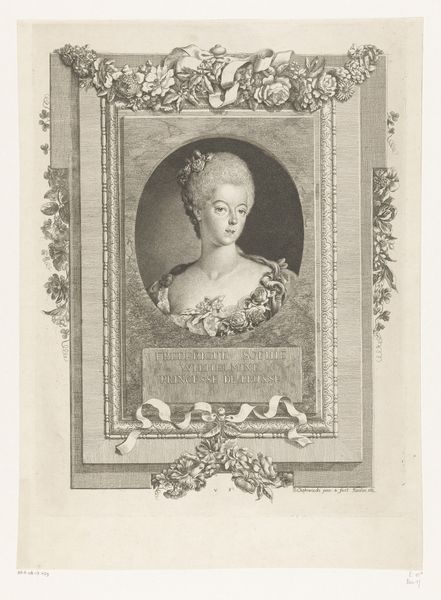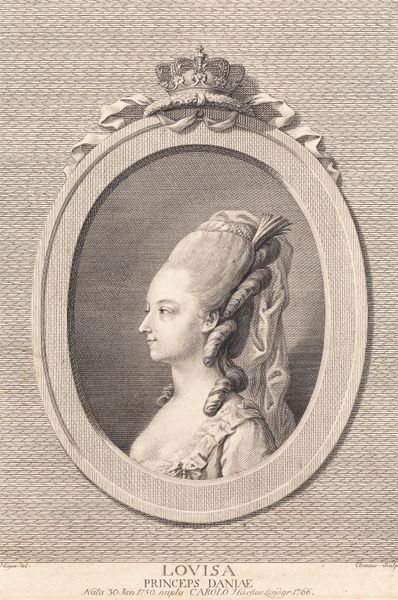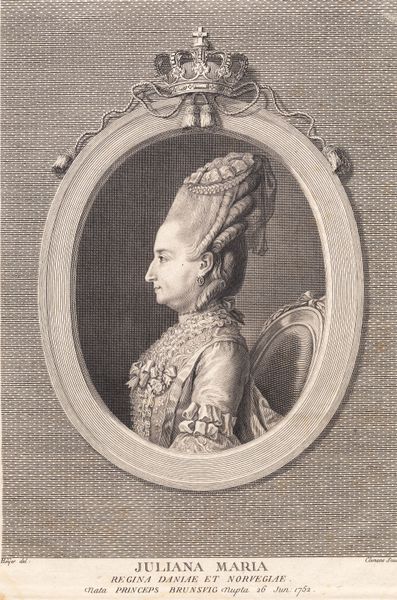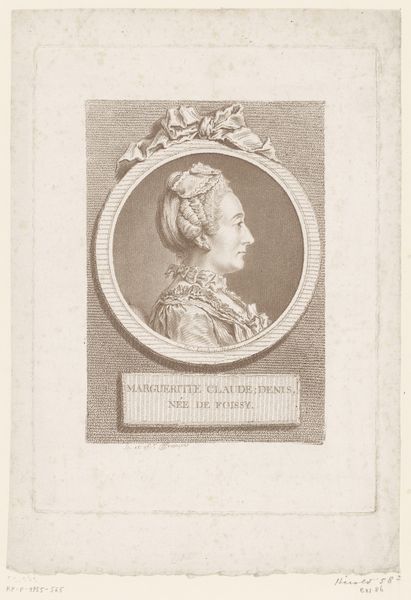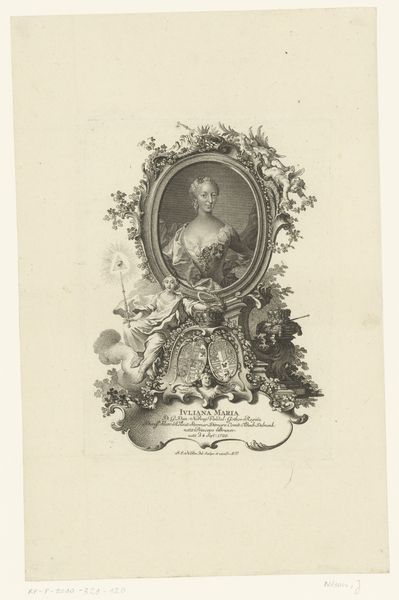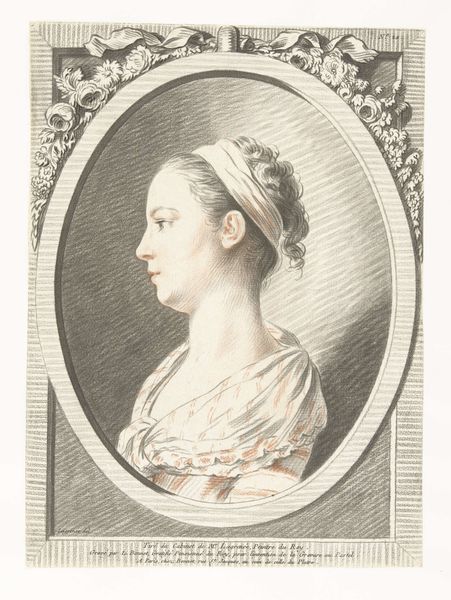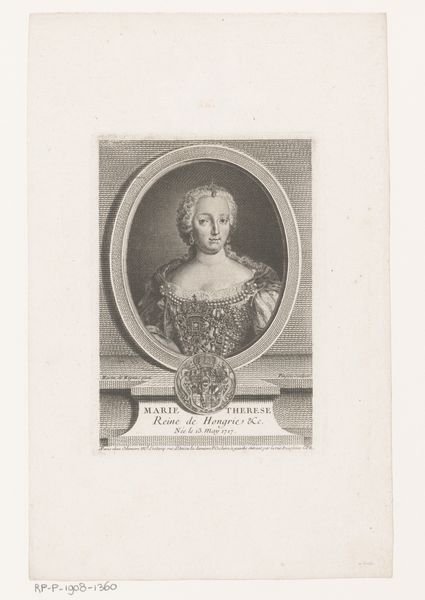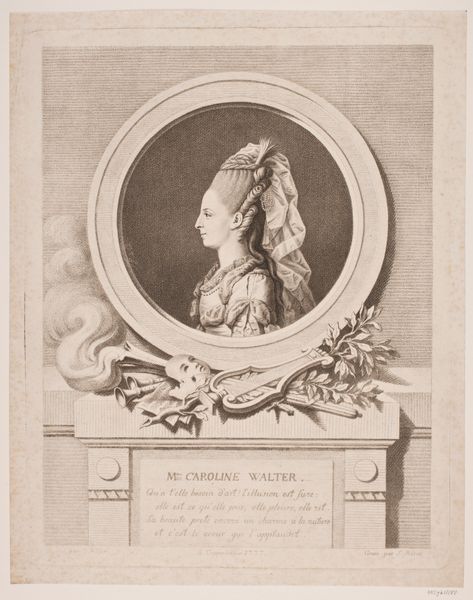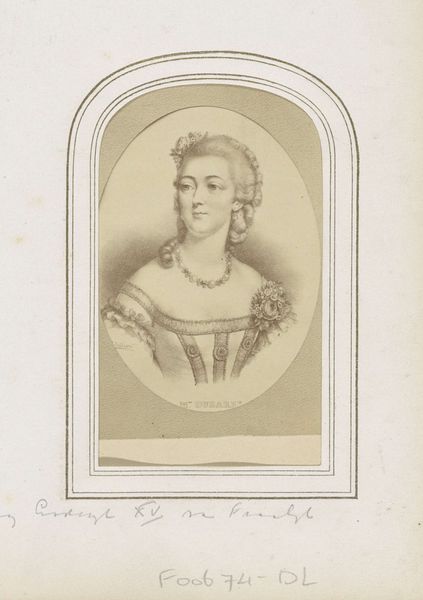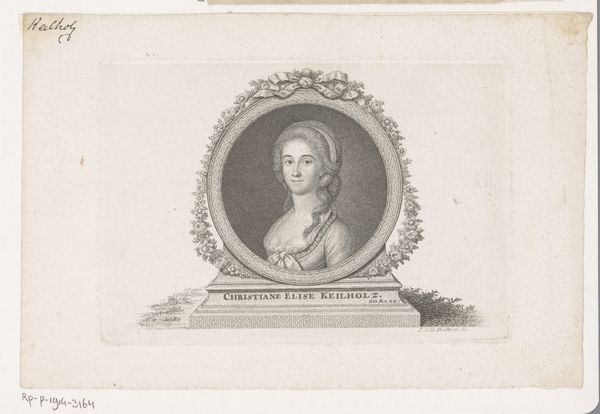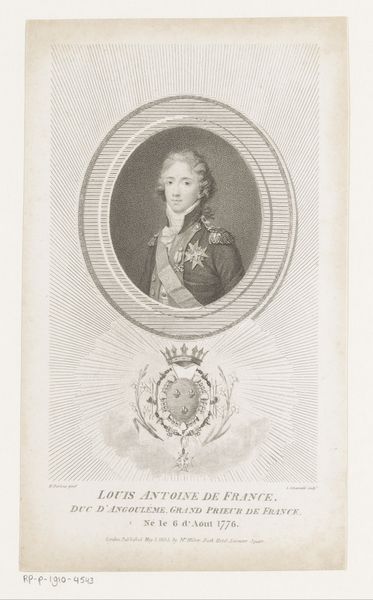
Dimensions: 252 mm (height) x 179 mm (width) (plademaal)
Curator: This is an engraving by J.F. Clemens, made between 1776 and 1779, depicting Louise Augusta, who married Carl of Hessen. Editor: The delicate lines create such a restrained but confident image. It gives the impression of an elevated status, yet its monochrome aesthetic gives it a stark simplicity. Curator: Precisely! Engravings like this were crucial for disseminating imagery and ideals across society. Think about it: before photography, prints were key for circulating royal portraits. This particular work places Louise Augusta within a context of power and nobility, yet does so by utilizing a printmaking technique. Editor: It is fascinating to think about this royal portrayal being dependent on artisans, craftsmen working with metal plates and acids. The labour-intensive process adds another layer to its reception. Is the value we assign to royal portraiture altered when we recognize the involvement of skilled yet anonymous workers in its creation? Curator: The print’s reliance on established visual conventions – the oval frame, the crown – solidifies its role in reinforcing societal norms of class and privilege. Notice the details in the rendering of her hairstyle – an ostentatious statement about societal class structures of the time. The artist clearly wants to place her within an aesthetic and political lineage. Editor: It speaks volumes about the role of institutions like the court in commissioning and distributing art, effectively shaping public perception and narratives. The choice of engraving, making multiples available, extends the reach and consolidates power via replicated imagery. Curator: Absolutely, its material form—a relatively inexpensive, reproducible print—belies the wealth and status it represents. These printed portraits, seemingly modest in material, acted as powerful instruments within broader political and social dynamics. Editor: Ultimately, understanding prints such as this enables a discussion of material and power structures, which still shape cultural narratives today. Curator: Indeed. Thinking about who consumed these prints and what it meant for them, provides valuable insights into eighteenth-century Danish society.
Comments
No comments
Be the first to comment and join the conversation on the ultimate creative platform.
